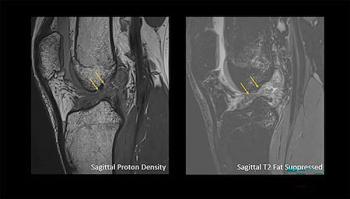
Drug-eluting stents soothe postop inflammation
Stents coated with sirolimus inflame their host arteries significantly less than their bare metal counterparts in the weeks following implantation, according to a poster from the American Heart Association meeting in New Orleans.
Stents coated with sirolimus inflame their host arteries significantly less than their bare metal counterparts in the weeks following implantation, according to a poster from the American Heart Association meeting in New Orleans.
Earlier studies had shown that patients treated with drug-eluting stents are less likely to experience restenosis than those treated with bare metal stents. With this study, researchers offer a possible explanation of those results, according to lead author Dr. Fred Leya, a professor of medicine/cardiology at Loyola University Chicago.
Leya and colleagues collected blood samples from 25 patients receiving treatment with drug-eluting stents and 28 patients receiving treatment with bare stents at baseline, 12 to 24 hours, and four to six weeks after the procedure.
To gauge inflammation levels, they tracked platelet activation using whole blood flow cytometry and measured plasma levels using an enzyme-linked immunosorbent assay.
While platelet activation and monocyte chemoattractant protein-1 (MCP-1) plasma levels were increased compared with baseline for both groups at the 12- to 24-hour mark, MCP-1 levels remained high in the bare metal group at four to six weeks.
Platelet activation in terms of CD11b expression was more pronounced postprocedure for the bare metal stent patients. Only these patients saw significantly higher interleukin-6 plasma levels at 12 to 24 hours.
"Stents are foreign materials in the human arteries," Leya said. "The body's natural response to the stent is to trigger inflammation. This irritation response is much more substantial in patients with a bare metal stent."
Drug-eluting stents are designed to release drugs over a 30- to 45-day period, when the natural healing that may lead to inflammation and a renarrowing of the artery is at its most exuberant, according to Leya.
The next step in the research process is to measure inflammation markers at one year and to compare the different types of drug-eluting stents to each other.
These stents are especially appropriate for diabetic patients, who have already shown good response to stenting treatment in the Stenting and Angioplasty with Protection in Patients at High Risk for Endarterectomy (SAPPHIRE) Trial.
In that trial, diabetic patients receiving carotid stenting had far fewer heart attacks and significantly fewer major adverse events at one-year follow-up than those who underwent carotid endarterectomy to prevent stroke.
"Their risk of restenosis can be double that of nondiabetics. And so with drug-eluting stents versus bare metal stents, the greater the inflammation, the greater the risk of restenosis. The greater the reduction in inflammation, the greater the benefit," Leya said.
For more information from the online Diagnostic Imaging archives:
Newsletter
Stay at the forefront of radiology with the Diagnostic Imaging newsletter, delivering the latest news, clinical insights, and imaging advancements for today’s radiologists.




























